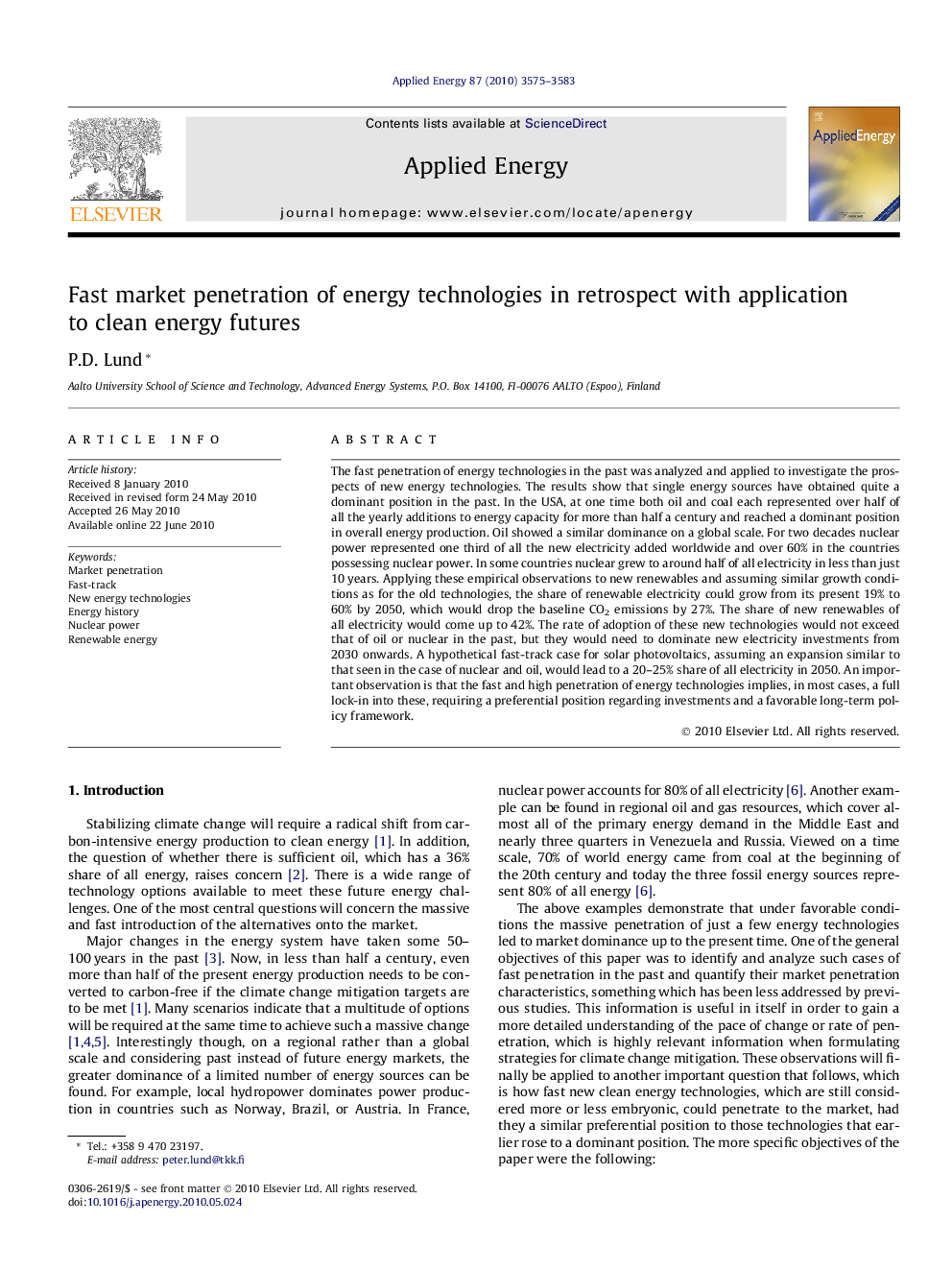| Article ID | Journal | Published Year | Pages | File Type |
|---|---|---|---|---|
| 244562 | Applied Energy | 2010 | 9 Pages |
The fast penetration of energy technologies in the past was analyzed and applied to investigate the prospects of new energy technologies. The results show that single energy sources have obtained quite a dominant position in the past. In the USA, at one time both oil and coal each represented over half of all the yearly additions to energy capacity for more than half a century and reached a dominant position in overall energy production. Oil showed a similar dominance on a global scale. For two decades nuclear power represented one third of all the new electricity added worldwide and over 60% in the countries possessing nuclear power. In some countries nuclear grew to around half of all electricity in less than just 10 years. Applying these empirical observations to new renewables and assuming similar growth conditions as for the old technologies, the share of renewable electricity could grow from its present 19% to 60% by 2050, which would drop the baseline CO2 emissions by 27%. The share of new renewables of all electricity would come up to 42%. The rate of adoption of these new technologies would not exceed that of oil or nuclear in the past, but they would need to dominate new electricity investments from 2030 onwards. A hypothetical fast-track case for solar photovoltaics, assuming an expansion similar to that seen in the case of nuclear and oil, would lead to a 20–25% share of all electricity in 2050. An important observation is that the fast and high penetration of energy technologies implies, in most cases, a full lock-in into these, requiring a preferential position regarding investments and a favorable long-term policy framework.
